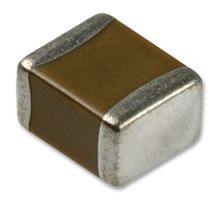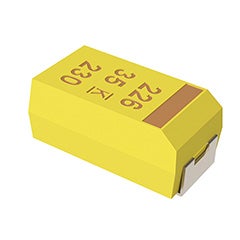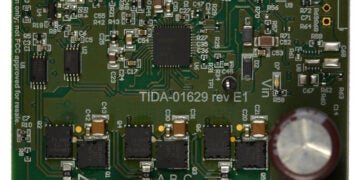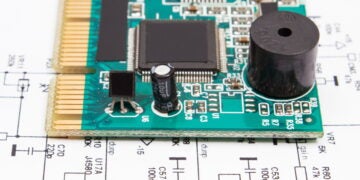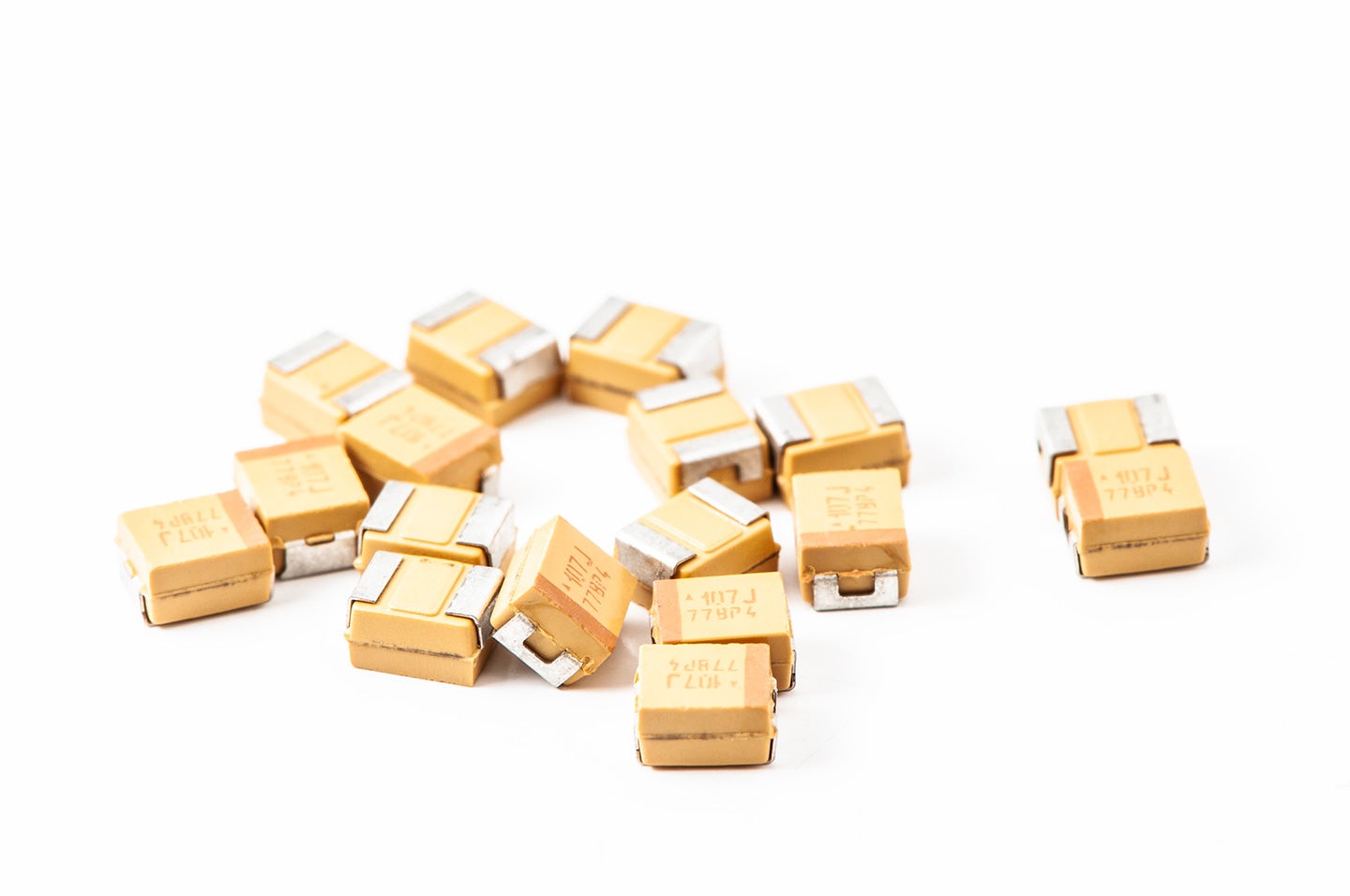
Tantalum surface mount capacitors
Capacitors are one of the most common types of passive components used in electronics. Due to their various uses, selecting the right capacitor for your design can be a challenging task. However, your selection has a direct impact on PCB performance, manufacturing efficiency, and overall design success. In many cases, it is advantageous to opt for surface-mount technology (SMT) over through-hole technology (THT) components, including capacitors. A SMD capacitor size chart is a valuable resource for understanding the relationship between package dimensions and application requirements, enabling engineers to optimize their designs for reliability, cost-effectiveness, and space efficiency.
Essential SMD Capacitor Size Chart
SMD (Surface Mount Device) capacitors represent the dominant capacitor technology in modern electronics, offering significant advantages over traditional through-hole components. These miniaturized components mount directly onto PCB surfaces without requiring drilled holes, enabling higher component density and facilitating automated assembly processes. A comprehensive SMD capacitor size chart, including typical types and common applications, is shown below.
SMD Capacitor Size Chart | ||||
| Package Size | Dimensions (mm) | Dimensions (inches) | Typical Capacitor Types | Common Applications |
| 01005 | 0.4 × 0.2 | 0.016 × 0.008 | Ceramic (MLCC) | Ultra-miniature RF modules, implantable medical devices |
| 0201 | 0.6 × 0.3 | 0.024 × 0.012 | Ceramic (MLCC) | Smartphones, wearables, and high-density digital circuits |
| 0402 | 1.0 × 0.5 | 0.040 × 0.020 | Ceramic, Low-value Tantalum | Consumer electronics, automotive modules, IoT devices |
| 0603 | 1.6 × 0.8 | 0.063 × 0.031 | Ceramic, Tantalum | General-purpose electronics, computer motherboards |
| 0805 | 2.0 × 1.25 | 0.079 × 0.049 | Ceramic, Tantalum, Small Electrolytic | Power modules, DC-DC converters, audio circuits |
| 1206 | 3.2 × 1.6 | 0.126 × 0.063 | Ceramic, Tantalum, Electrolytic | Automotive systems, industrial controls, and power filtering |
| 1210 | 3.2 × 2.5 | 0.126 × 0.098 | High-capacitance Ceramic, Electrolytic | Power filtering, high-current applications |
| 1812 | 4.5 × 3.2 | 0.177 × 0.126 | High-voltage Ceramic, Electrolytic | Automotive electronics, communication equipment |
| 2220 | 5.6 × 5.0 | 0.224 × 0.197 | High-capacitance MLCC, Electrolytic | LED drivers, power supplies, and bulk energy storage |
Common SMD Capacitor Types and Applications
As listed in the SMD capacitor size chart above, ceramic, tantalum, and electrolytic capacitors are the most common surface-mount capacitors.
Ceramic Capacitors (MLCCs)
Multilayer ceramic capacitors (MLCCs), such as the GRM1555C1H1R5BA01D from Murata below, dominate SMD applications due to their excellent frequency response, temperature stability, and cost-effectiveness. Available in packages from 01005 to 2220, MLCCs serve as the workhorse components for decoupling, bypassing, and high-frequency filtering applications.
- Key Advantages: Non-polarized design, low ESR, excellent high-frequency performance, wide temperature range operation, and automated assembly compatibility.
- Primary Applications: Power supply decoupling, signal filtering, RF circuits, timing circuits, and electromagnetic interference (EMI) suppression across all electronic segments.
Tantalum Capacitors
Tantalum SMD capacitors, such as the Kemet T491B107K006AT shown below, offer superior capacitance density compared to ceramic alternatives, making them ideal for space-constrained applications that require higher capacitance values. Available in standardized sizes from A (3.2×1.6mm) to larger packages, tantalum capacitors provide stable performance in critical applications.
- Key Advantages: Offers the highest capacitance values available, is cost-effective for bulk storage, and features a wide range of voltage ratings.
- Primary Applications: Power supply filtering, motor drives, audio amplifiers, and energy storage in switching power supplies.
Electrolytic Capacitors
SMD electrolytic capacitors, such as the Nichicon UWT1H221MNL1GS shown below, offer the highest capacitance values in surface-mount packages, making them essential for bulk energy storage and power filtering applications. While larger than ceramic or tantalum alternatives, they offer unmatched capacitance density for high-value applications.
- Key Advantages: Offers the highest capacitance values available, is cost-effective for bulk storage, and features a wide range of voltage ratings.
- Primary Applications: Power supply filtering, motor drives, audio amplifiers, and energy storage in switching power supplies.
Why SMD Capacitor Size Selection Matters
SMD capacitor size is important as it can impact electrical performance, space optimization, the PCB manufacturing process, and thermal management. Important factors to consider when choosing the best size for your SMD capacitor(s) are:
SMD Capacitor Size Selection Factors
- Voltage rating requirements
- Capacitance value(s)
- Operating frequency
- Environmental conditions
- Manufacturing capabilities
Optimizing Your SMD Capacitor Size Chart Utilization
An SMD capacitor size chart can be a valuable asset when designing boards that utilize surface-mount technology. Following the guidelines below will help you optimize your capacitor selection(s) and usage.
Guidelines for SMD Capacitor Selection Optimization
|
SMD capacitor size selection requires a careful balance between electrical performance, physical constraints, manufacturing requirements, and cost considerations. By understanding the relationship between package dimensions and electrical characteristics, engineers can optimize their designs for reliability, efficiency, and manufacturability. The key lies in systematically evaluating all relevant factors rather than defaulting to the smallest available package size.
If you’re looking for CAD models for common components or a comprehensive SMD capacitor size chart and how to choose the best size for your application, Ultra Librarian helps by compiling all your sourcing and CAD information in one place.
Working with Ultra Librarian sets your team up for success, ensuring streamlined and error-free design, production, and sourcing. Register today for free.


